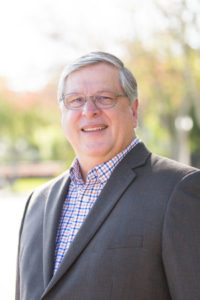The COVID-19 pandemic isn’t an event churches can just ride out until everything returns to normal once the coronavirus recedes, Christian thought leaders say.
The fact is, there is no “normal” to go back to, said Carol Childress, a Texas-based church and organizational consultant. “We have left Egypt, and we are never coming back.”

Carol Childress
Childress and other experts say the coronavirus has ushered in a season that must be reckoned with all on its own. Faith groups must find authentic ways to minister within the pandemic, however long it lasts. And they must accept that all or some of the previous ways of worship and ministry no longer will work.
But she gets why that’s hard news to hear for many congregations.
“The greatest forces of change are external, not internal,” she said. “And that’s something that’s hard for churches to understand.”
But “change” is a word churches are likely to hear more and more as the pandemic continues.
“We’re not going back to normal,” Andy Crouch, Kurt Keilhacker and Dave Blanchart wrote in The Praxis Journal, an online publication focused on innovative ideas, practices and leaders.
COVID-19 should be treated as “an economic and cultural blizzard” ushering in “a little ice age” that will change organizations for years to come, they wrote in the March article titled “Leading Beyond the Blizzard: Why Every Organization is Now a Startup.”
“The priority of leaders must be to set aside confidence in their current playbook as quickly as possible.”
Everything, including how and to whom people give, is shifting and must be re-imagined, they contend. “The priority of leaders must be to set aside confidence in their current playbook as quickly as possible.”
New visions must be developed that honor churches’ “mission and the communities they serve” and that “make the most of their organization’s assets — their people, financial capital, and social capital, leaning on relationship and trust.”
‘It’s not up to them to be great planners and predictors’
Many churches have realized that need and are engaging in visioning processes to become more effective during the pandemic, said Harry Rowland, associate coordinator of congregations and leadership for the Cooperative Baptist Fellowship.
“There are churches asking, ‘What does God want us to do during this time?’”

Harry Rowland
This is a back-to-the-drawing-board moment in which strategic planning, with its reliance on financial, cultural and demographic forecasts, may not be the best approach, Rowland said. “Strategic plans made a year ago are probably collecting dust because nobody could see this coming.”
Visioning processes, including CBF’s Dawnings approach, are being embraced to translate existing missions and callings for existing conditions, he said. “You are not being asked to plan the ultimate future of the church. You are just trying to discern what to do right now.”
Congregations use the approach in an effort to discern God’s direction for them, rather than asking God to bless a church’s plan. One result is a lot less pressure on church memberships and clergy, Rowland added. “They realize it’s not up to them to be great planners and predictors.”
State groups and denominational entities also are being forced to reinvent how they serve their constituents during the pandemic.
“We are really having to dig deep into what we think our churches need,” said Ray Johnson, coordinator of CBF Florida.

Ray Johnson
Like nearly all religious groups, Johnson’s organization has faced technological challenges due to weeks of shutdowns and continuing social-distancing requirements. He has not traveled the state for face-to-face meetings in months while his organization has gone to all-Zoom-meeting formats.
One of the questions CBF Florida is asking is how it can become a digital resource for its congregations during and after the pandemic. “How can we assist smaller congregations without IT persons so pastors don’t feel so burdened?” Johnson said.
The organization also wants to explore how to stay in this kind of discernment process moving forward, he added. “This is a teachable moment where whatever happens, it’s not going to be the way it was before COVID-19.”
‘Not a time to be fearful’
One way to do that is to realize that change is, and always has been, constant, Childress said.
Continuous change develops from what has come before and can be anticipated and managed. It has served as the basis of long-range planning.
“The pandemic has been a load of gasoline dumped on a fire that was already going.”
“But we are in a period of discontinuous change,” she explained. “It is disruptive, unanticipated, situational. It challenges our assumptions.”
And this is nothing new in the history of the world. The Reformation and the Renaissance are examples of discontinuous change.
More recent manifestations include the rise of secular culture, the dominance of technology, mass migration and the global economy. COVID-19 just brings it all into sharp relief, Childress added. “The pandemic has been a load of gasoline dumped on a fire that was already going. The pandemic, and the response to it, has exponentially accelerated this change.”
Just as there is no going back, there is also no ignoring it, she added.
“We have to go back and reexamine everything we’re doing and ask ourselves, ‘Is this appropriate and effective where we are?’”
Childress said she is optimistic about the situation because she sees God using the current moment to reshape the world to accomplish God’s mission. “Creativity and innovation will emerge out of the requirement to change. This is not a time to be fearful.”
Related stories:
Your church after COVID: Restart, refresh or relaunch?
What Now? serves up free COVID guidance for churches
Is religion more important amid COVID or is this just a phase?


